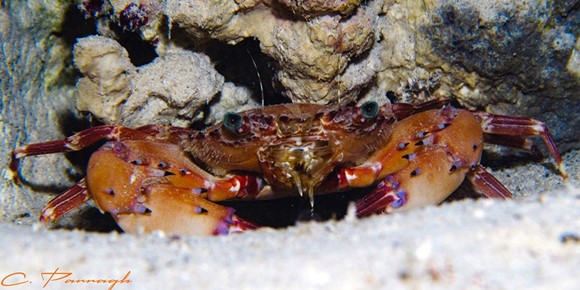Overview
Whether the historical origins of the reef name actually have something to do with the word "dangerous"? Perhaps. After all, Dangarus is known for its oceanic shark sightings. Fortunately, statistics help put our minds at ease: Approximately ten people are killed by shark attacks each year, most of them surfers. Since humans kill over 100 million sharks a year, we needn't wonder if we don't see them anymore.
Description
This is the southernmost reef of St. John's and offers plenty of variety. The reef has an extension of 150m by 70m. Hidden on the main reef is the small cave system. It is easy to dive and there is no danger of getting lost. The entrance is located on a small plateau at 9m depth.
In the outer area, the plateau extends another 60m to the south. Here there are carpet anemones and harlequin crabs that live together symbiotically. At another spot lives a hammerhead shark. To the west, numerous coral structures rise from a mixture of soft and hard corals. In between them, giant moray eels and napoleon wrasse are always hiding. Two ergs reach from 20m depth to 9m below the surface. Towards the east there is a very nice garden of mountain corals in all colors.
Due to the turbulence at the Ergs it is a challenging dive site in stronger currents. Also, the morning current can push you into the open water.
Hotspots
- At Dangarus, night diving is highly recommended.
- Caves: The wonderful caves of Dangarus are anything but "dangerous" and a lot of fun!
- Sea Anemones: Carpet anemones, which live symbiotically and harmoniously with harlequin crabs, are located on the large plateau to the south.
- Giant moray eels hide among the coral structures to the west. They are not true beauties, but somehow pretty in their own way. And who decides who is beautiful and who is not anyway?

 ENGLISH
ENGLISH
 РУССКИЙ
РУССКИЙ
 DEUTSCH
DEUTSCH

